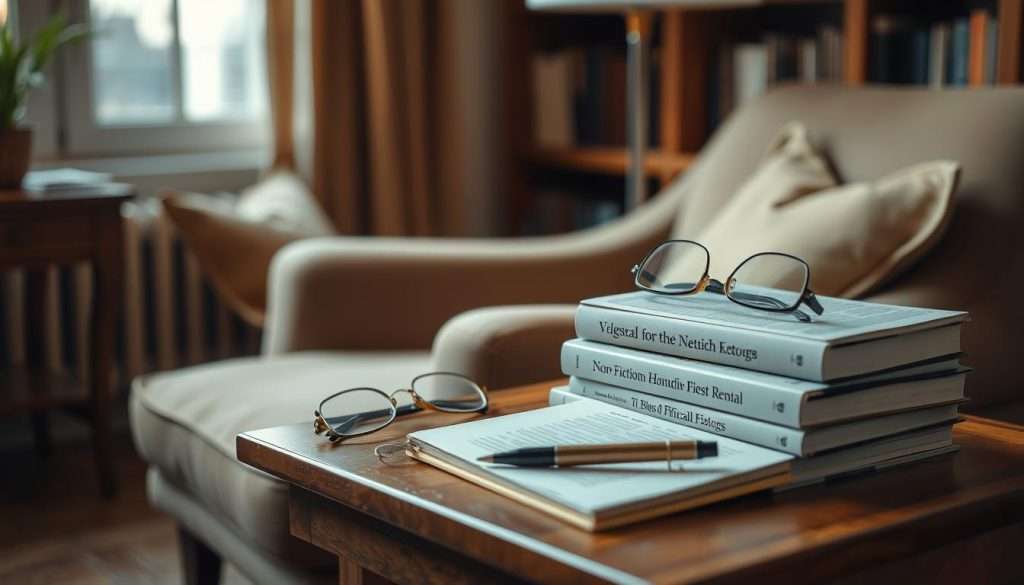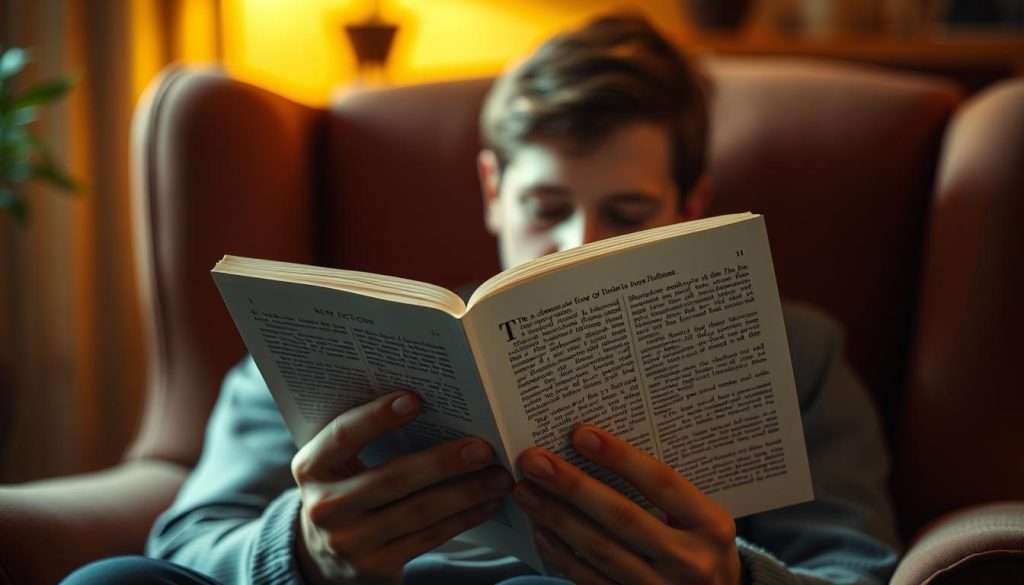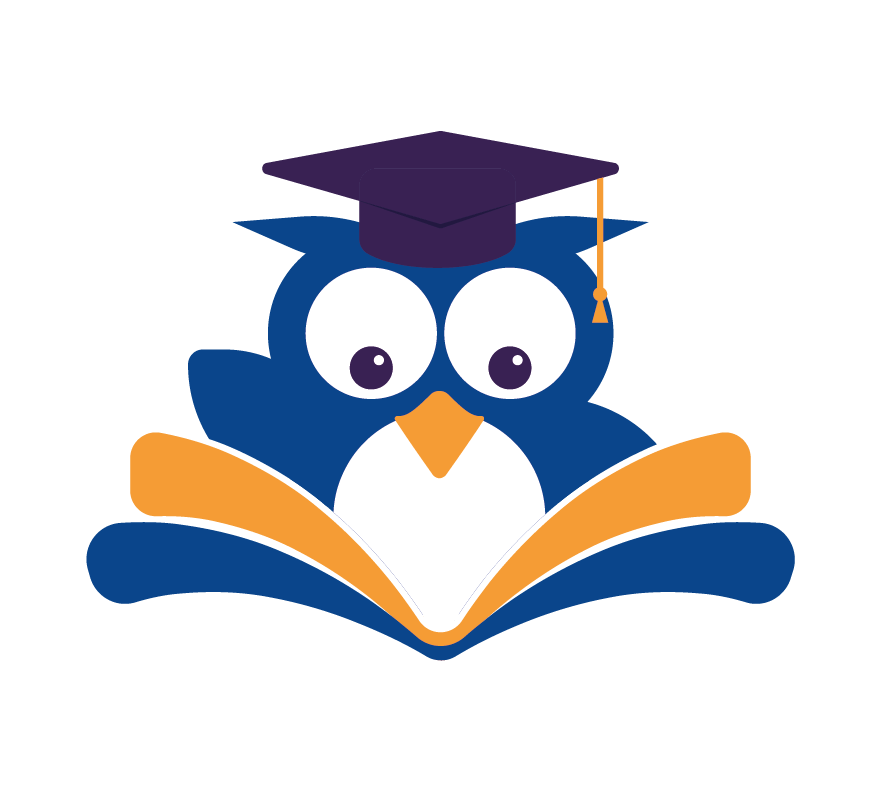Many of our clients struggle to write their non-fiction book for months or years. They often lack clarity on how to read effectively. Intentional reading makes a big difference, helping readers understand and remember more.
Before starting a non-fiction book, asking the right questions can greatly improve your understanding. It’s not just about reading; it’s about learning and using what you learn. We think that with the right mindset and tools, anyone can change how they read.
Key Takeaways
- Intentional reading enhances comprehension and retention.
- Asking the right questions before reading is crucial.
- Approaching non-fiction books with a clear strategy improves learning.
- Effective reading is about more than just finishing a book.
- Transforming your reading habit can be achieved with the right approach.
The Power of Intentional Reading
Intentional reading can really boost our learning. It makes reading more meaningful. When we read with a purpose, we dive deeper into the material. We ask questions and make connections that help us understand better.
The Difference Between Passive and Active Reading
Passive reading is just taking in information without much thought. Active reading, on the other hand, is diving into the content. We analyze, question, and reflect. This way, we learn more and remember it better.
How Pre-Reading Questions Transform Your Learning Experience
Pre-reading questions help us read actively. Asking ourselves questions like “What problem does this book solve?” gets us ready to engage. This method improves our understanding and connects us more deeply to what we’re reading.
| Reading Approach | Characteristics | Benefits |
|---|---|---|
| Passive Reading | Limited engagement, minimal analysis | Poor retention, lack of application |
| Active Reading | Deep engagement, critical analysis | Better retention, effective application |
The Science Behind Effective Non-Fiction Reading
Learning about the science of non-fiction reading can really help us. When we read non-fiction, we’re not just getting info. We’re going through a complex process of processing, keeping, and using what we learn.
Cognitive Processing and Information Retention
Our brains do better when we’re really into what we’re reading. This is where cognitive processing comes in – the mental steps of seeing, understanding, and making sense of info. Studies show that asking questions while reading can make us better readers. It keeps us engaged and helps us get it.
The Role of Purpose in Learning
Having a clear goal while reading non-fiction is key. It keeps us on track and focused on what’s important. When we know what we’re looking for, we’re more likely to remember the key stuff.
Research on Question-Based Reading Approaches
Research shows that asking questions while reading can really boost our understanding. By asking the right questions before and while we read, we can enhance our understanding and remember more. As Yolanda Fontanez-Coleman’s article points out, this method makes us more active and involved learners.
By grasping the science of non-fiction reading, we can transform our reading experience into something more fun and useful. This knowledge lets us read with a clear goal in mind. This leads to better remembering and using what we read.
5 Smart Questions to Ask Before You Read Any Non-Fiction Book
Before you start a non-fiction book, it’s smart to ask some questions first. This helps you get more out of your reading. You’ll understand the book better, connect it to what you already know, and use the new information.
Overview of the Question Framework
The framework has five key questions to guide your reading. These questions help you dive deeper into the material. They also help you see the book’s main point, check if the author knows what they’re talking about, and link new info to what you already know.
Here are the five questions:
| Question | Purpose |
|---|---|
| What problem does this book solve? | Identify the book’s core purpose |
| Who is the author and what are their credentials? | Evaluate the author’s expertise |
| What is the book’s main argument or thesis? | Understand the central claim |
| How does this book relate to what I already know? | Connect new information to existing knowledge |
| How will I apply what I learn? | Plan for knowledge application |
When to Ask These Questions in Your Reading Process
It’s best to ask these questions before you start reading. This helps you read with purpose and focus. As Jennifer Louden suggests, thinking about what you already know about the topic can help you focus your reading.
How to Document Your Pre-Reading Analysis
Keep track of your thoughts and questions by using a reading journal or a note-taking app. This keeps you organized and helps you get the most from your reading.
Question1: What Problem Does This Book Solve?
Reading a non-fiction book starts with a simple question: what problem does it solve? Knowing the main issue a book tackles is key for critical reading.
Identifying a book’s problem helps you match it with your needs. This makes your reading more engaging and helps you remember what you read.
Identifying the Book’s Core Purpose
To find a non-fiction book’s main purpose, look at its title, subtitle, and introduction. These parts usually tell you what the book is about.
K.M. Allan says beta readers can help with non-fiction manuscripts. Similarly, you can see if a book is relevant to you by understanding its main goal.
Aligning the Book with Your Personal or Professional Needs
After finding the book’s main purpose, think about how it fits with your needs. Ask yourself:
- Does this book solve a problem I’m facing?
- Will it improve my skills or knowledge?
Exercise: Defining Your Specific Reading Goals
To read more effectively, set specific goals. Use the table below to plan your objectives:
| Goal | Description | Relevance to Book’s Purpose |
|---|---|---|
| Improve knowledge on a specific topic | Enhance understanding of a particular subject | High |
| Solve a professional problem | Apply book’s insights to workplace challenges | High |
| Personal development | Use the book’s advice for self-improvement | Medium |
By following these steps, your reading of non-fiction books will be more focused and useful. This makes your reading non-fiction experience more rewarding.
Question2: Who is the Author and What are Their Credentials?
Starting your journey in non-fiction reading? It’s key to check the author’s skills and any biases they might have. Knowing who wrote the book and why they’re qualified is very important.
Evaluating Author Expertise and Background
To get the most out of non-fiction, look at the author’s background. Check their job history, education, and any special knowledge they have. You can find this info on the book cover, in the author’s bio, or online.
For example, if the book is about economics, knowing the author is a top economist or has a Ph.D. adds to their credibility.
Recognizing Potential Biases and Perspectives
Authors always have their own views and biases. Knowing these can make your discussions more meaningful. Look at the author’s affiliations and any political views they might have.
Being aware of these can help you understand the book better and think more critically about what you read.
How to Research an Author Effectively
Researching an author is easy. Just check their Wikipedia page, look for interviews or articles they’ve written, or read reviews of their books. You can also visit their professional website or social media.
This research adds context to your reading and helps you analyze non-fiction better.
By examining an author’s background and views, you can dive deeper into the material. This not only makes your reading more enjoyable but also enriches your discussions with others.
Question3: What is the Book’s Main Argument or Thesis?
Understanding a non-fiction book’s main argument is key to getting it. This question helps you see the author’s main point and check the evidence they use.
Techniques for Finding the Central Claim
To find the main argument, start by looking at the book’s structure. Check the table of contents and the introduction. The introduction usually states the book’s main idea.
Using the Table of Contents and Introduction as Roadmaps
The table of contents and introduction guide you through the book’s main points. By studying these sections, you can spot the key chapters and ideas that back up the author’s thesis. For example, a book on critical thinking might cover cognitive biases, logical fallacies, and how to make better decisions.
| Section | Purpose | Key Elements to Look For |
|---|---|---|
| Table of Contents | Outlines the book’s structure | Chapter titles, section headings |
| Introduction | Presents the main argument or thesis | Thesis statement, overview of key points |
Distinguishing Between Claims and Supporting Evidence
After finding the main argument, it’s important to tell apart the author’s claims from the evidence. Critical reading means checking if the evidence really backs up the author’s thesis.
By using these methods, you’ll become better at reading complex non-fiction books.

Question4: How Does This Book Relate to What I Already Know?
When we start a new non-fiction book, it’s key to think about its connection to what we already know. This question helps us analyze non-fiction better by linking what we know to what we’re learning.
Connecting New Information to Your Existing Knowledge
Relating new info to what we already know helps us understand and remember better. We find out where our knowledge is missing and how new info can fill those gaps. This way, we enhance our understanding and make it more interesting.
Identifying and Addressing Knowledge Gaps
To link new info to what we know, we must find where our knowledge is incomplete. We reflect on what we know and see where new info can add to or challenge our beliefs. By fixing these gaps, we get a deeper understanding of the topic.
Creating a Personal Knowledge Map for Each Book
Creating a personal knowledge map is a great way to see how new and old knowledge connect. We diagram the book’s key concepts and link them to what we already know. This makes it clear how the new info fits into our bigger picture of the subject, helping us read non-fiction better.
By asking how a book relates to what we know, we turn reading into an active learning experience.
Question5: How Will I Apply What I Learn?
Reading non-fiction is more than just understanding. It’s about applying what we learn. As we dive into a non-fiction book, we get lost in the ideas. But the real value is in using these insights in our lives.
Setting Specific Implementation Intentions
To get the most from our non-fiction book, we must think about how to use its lessons. We need to set clear, doable goals. For example, if the book is about being more productive, we might start a new task system or change our daily habits.
Creating an Action Plan for Knowledge Application
After setting our intentions, we need an action plan. This means breaking down big goals into smaller steps. For instance, if we want to get better at public speaking, our plan might include joining a book discussion group or taking a class.
Measuring the Real-World Impact of New Knowledge
To see if our reading is making a difference, we need to measure it. We can do this by keeping a journal or setting clear goals. K.M. Allan’s article suggests asking ourselves “What Would You Cut?” to improve our critical reading and application.
By following these steps, we can make our reading of non-fiction books truly impactful. It turns reading into real, meaningful results.
Integrating These Questions Into Your Reading Routine
Adding the 5 smart questions to your pre-reading routine can make reading better. It helps you understand more. To get the most out of your reading, it’s key to be consistent and thoughtful.
Creating a Pre-Reading Ritual
Having a pre-reading ritual gets you ready to read actively. Jennifer Louden suggests journaling to help writers focus. Try writing down your thoughts and questions before starting your book.
Time Management for Thoughtful Reading
Good time management is vital for deep reading. Make sure to have a set time to read and think about your book. Use calendars or apps to plan your reading times.
Digital and Physical Tools to Support Your Process
The right tools can make reading better. Use digital apps or physical journals to jot down your thoughts and questions. Here’s a look at some popular tools:
| Tool | Digital/Physical | Key Features |
|---|---|---|
| Evernote | Digital | Organization, tagging, and syncing across devices |
| Moleskine Journal | Physical | High-quality paper, durable binding, and tactile experience |
| Notion | Digital | Customizable templates, database creation, and collaboration features |
By using these tools and methods, you’ll improve your understanding and memory of what you read.

Applying These Questions to Different Non-Fiction Genres
To get the most out of non-fiction books, we need a thoughtful reading strategy. This includes asking the right questions. Different genres need different approaches. By using the 5 smart questions, you can better understand and remember what you read.
Self-Help and Personal Development Books
When reading self-help books, it’s key to check if the advice fits your goals. Ask yourself: “What problem does this book solve for me?” and “How will I apply what I learn?” This ensures you focus on advice you can use in your life.
Business and Leadership Books
In business and leadership books, knowing the author’s background and main points is crucial. You should think if the ideas and examples fit your work. This helps you use the insights in your job.
History and Biography Books
When reading history or biography, think about the author’s perspective and sources. Ask “Who is the author and what are their credentials?” to spot biases and research quality.
Science and Technology Books
In science and technology books, understand the main idea and how it connects to what you know. Critically look at the evidence and think about the information’s impact. This keeps you up-to-date with new discoveries.
By adjusting the 5 smart questions for each genre, you’ll become a better reader. You’ll be able to analyze non-fiction works more deeply and effectively.
How These Questions Enhance Critical Thinking Skills
Asking the right questions before you read can boost your critical thinking. The five smart questions we’ve talked about help you think deeply about what you’re reading. They make you a more careful and thoughtful reader.
Developing Analytical Reading Habits
These questions turn reading into an active process. You start to question the author’s points and see how they fit with what you already know. This way, you learn to read critically, no matter the book.
Becoming a More Discerning Information Consumer
Using these questions regularly makes you better at sorting out good information from bad. You learn to spot strong arguments and avoid weak ones. This skill is key in today’s world, where false information is everywhere.
Transferring These Skills to Other Learning Contexts
The skills you gain from these questions help in many areas of life and work. You’ll get better at analyzing information and making smart choices. As Yolanda Fontanez-Coleman says, “Asking questions while reading nonfiction can help readers develop critical thinking skills.” Start using these questions to become a more critical and discerning reader.
Conclusion: From Passive Reading to Active Knowledge Building
Asking the right questions can change how we read. Instead of just reading, we start building knowledge that we can use. The 5 smart questions to ask before reading any non-fiction book help us read better.
By using these questions, we become better at evaluating what we read. This way, we can make the most out of reading non-fiction. It helps us connect what we read to our own lives, leading to a deeper understanding.
So, when you read a non-fiction book next, remember to ask these 5 smart questions. You’ll see how this simple method can transform your reading experience. It will help you get the most out of what you read.

